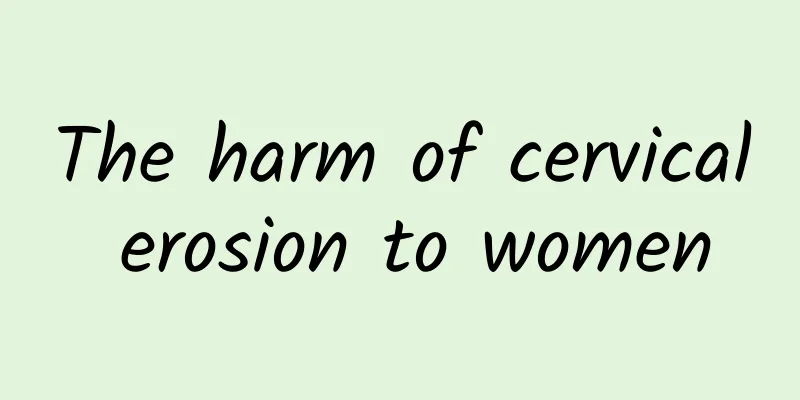The harm of cervical erosion to women

|
Cervical erosion is the most common pathological change of chronic cervicitis and a common disease that threatens women's reproductive health. Its main hazards are as follows. 1. High risk of cervical cancer Clinical statistics show that the incidence of cervical cancer in women with cervical erosion is nearly ten times higher than that of the general population, because long-term inflammatory stimulation leads to atypical hyperplasia of the cervical canal, which can gradually develop into cervical precancerous lesions. In addition, patients with stubborn cervical erosion need to take drugs for multiple times, which causes the vagina to lose its normal microecological balance, reduce immunity, and reduce the ability to resist viruses, leading to cervical cancer. 2. Trigger other inflammatory stimuli When cervical erosion occurs, it can affect other organs and cause inflammation. For example, the pathogens of cervical erosion can ascend to cause endometritis; spread through the parauterine ligaments and lymphatic vessels to cause chronic pelvic inflammatory disease; when inflammation spreads to the bladder triangle, it can cause urinary system diseases and cause irritation symptoms such as urinary pain, frequent urination or difficulty urinating. 3. Cause miscarriage? Patients with cervical erosion during pregnancy have high levels of estrogen and progesterone in their bodies, which can cause the cervical erosion to gradually become more severe and even be accompanied by irregular vaginal bleeding. If not treated in time, it can cause premature rupture of the fetal membranes, loss of amniotic fluid, and lead to miscarriage. 4. Cause infertility Severe cervical erosion can even cause female infertility. The texture and secretion of cervical mucus are directly related to whether sperm can pass through the cervix into the uterine cavity. Cervical secretions will increase significantly, become thick, and contain a large number of white blood cells, which will destroy the normal physiological environment of the vagina and restrict the activity of sperm, leading to infertility. |
<<: Understand the main manifestations of 3 types of vaginitis
>>: 3 things women are forbidden to do during menstruation
Recommend
Eating more than just oats can lower cholesterol. Nutritionists reveal: 4 good foods that help lower cholesterol!
When it comes to foods that lower cholesterol, th...
What are the symptoms of perimenopausal syndrome
The main symptoms of perimenopausal syndrome are:...
Ways to help prevent adnexitis in daily life
The incidence of adnexitis in China is very high,...
What are the sequelae of abortion?
The sequelae of female abortion involve many aspe...
Which hospital is best for treating moderate cervical erosion?
Cervical erosion is the most common gynecological...
Detailed explanation of the causes of cervical hypertrophy
Cervical hypertrophy is a common disease in femal...
Seven detailed reasons for cervical hypertrophy
Cervical hypertrophy is also a type of gynecologi...
Maintaining daily vulvar hygiene is the main way to prevent cervical hypertrophy
Generally, common cervical hypertrophy will not c...
The most common cause of dysmenorrhea
Dysmenorrhea mainly occurs during the menstrual c...
Will uterine fibroids affect life expectancy?
Will uterine fibroids affect life expectancy? In ...
White-collar workers who sit for long periods of time should be alert to pelvic inflammatory disease
Many white-collar workers have to sit for long pe...
Experts explain physical treatment methods for cervical erosion
Among the various methods of treating cervical er...
Save your knees yourself! Scott: Practice these two moves to have "good knee strength"
"When the weather gets cold, knee joint pain...
What are the treatments for cervicitis?
Cervicitis is one of the common gynecological dis...
Can uterine fibroids be treated with minimally invasive methods? The treatment process of uterine fibroids
Minimally invasive surgery is a common cancer tre...









